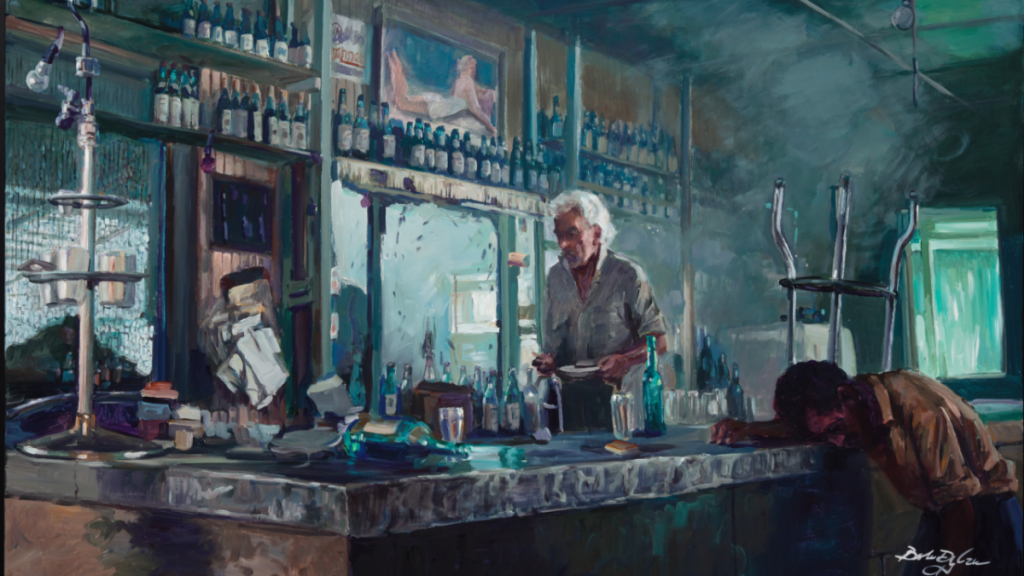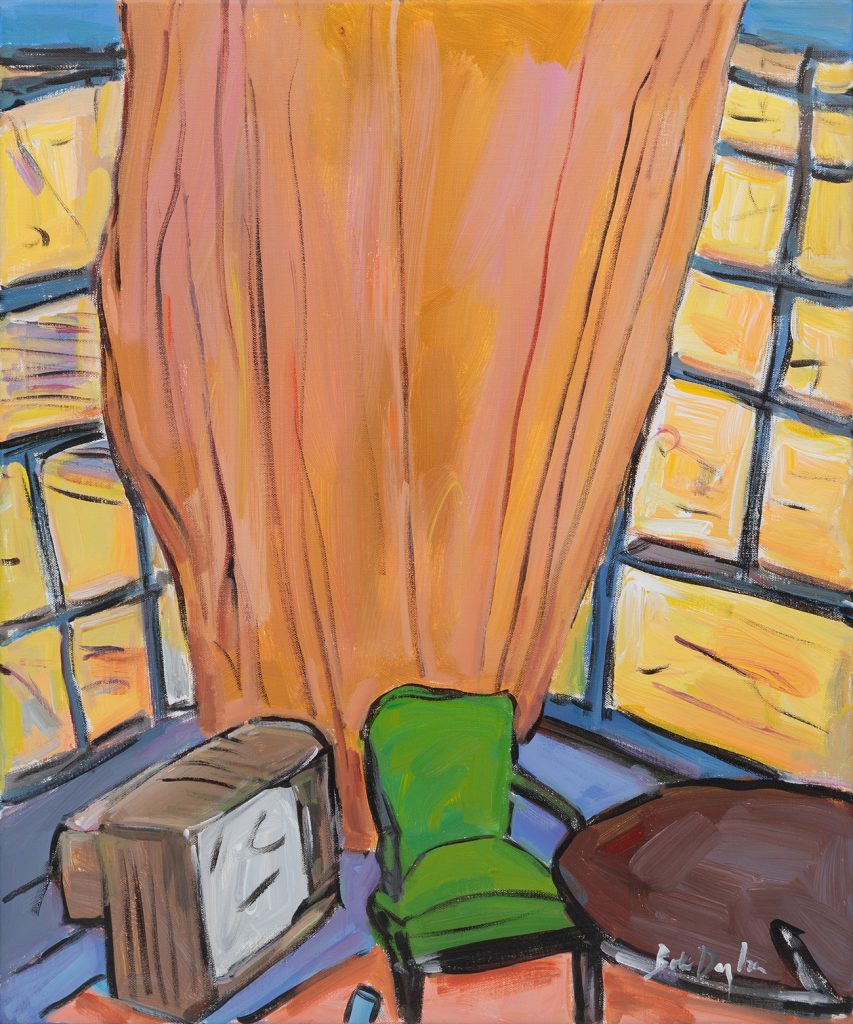Few artists have been able to move between disciplines as naturally as Bob Dylan. Universally known for having transformed the history of popular music, Bob Dylan has demonstrated that his talent transcends words and melody. For decades, his relationship with painting has been a natural extension of his way of looking at the world: the same sensibility that he translated into song manifests itself in color and form, giving life to a unique visual work.
The origins of an artistic look
The story of Bob Dylan’s painting begins in the sixties, at the height of his musical career. While composing generational anthems like

It was not until the early 2000s that he decided to share his work with the public. In 2007 he presented his first major exhibition, The Drawn Blank Series, at the Halcyon Gallery in London. This show revealed a collection of watercolors and gouaches based on sketches made between 1989 and 1992. Since then, Bob Dylan’s paintings have toured museums and galleries around the world, from the Shanghai Museum of Modern Art to the Centre for Contemporary Art in Denmark.

His plastic work constantly dialogues with his music. In both disciplines there is a search for rhythm, composition and emotion. His works, like his songs, explore themes such as travel, loneliness, memory or the urban and rural landscapes that make up his biography. Bob Dylan’s paintings show motels, roads, train tracks and anonymous figures that seem to be taken from his most introspective lyrics.
Style and atmosphere in Bob Dylan’s paintings
Bob Dylan’s pictorial style is characterized by its honesty and simplicity. His strokes are direct and expressive, charged with a silent lyricism. He uses intense but balanced colors, creating scenes that refer to American realism, with echoes of Edward Hopper or Grant Wood, although with a more intimate and melancholic tone.
His characters seem suspended in time, as if they were the same protagonists that inhabit his songs. Each of Bob Dylan’s paintings is a condensed story, a scene charged with humanity and poetry. In his painting, as in his music, he does not seek technical perfection, but pure emotion.

In 2016, Dylan received the Nobel Prize in Literature “for having created new poetic expressions within the great tradition of American song.” That same narrative ability carries over to his visual art: his canvases speak without words, evoking the passage of time and the beauty of the ephemeral.
An artistic legacy beyond music
Today, Bob Dylan’s paintings are an essential part of his creative legacy. His works are exhibited and collected all over the world, arousing the interest of critics and art lovers. Even some auctions of Bob Dylan’s works have reached remarkable prices, consolidating him as a relevant figure also within the contemporary art market.
Far from being a curiosity, Bob Dylan’s facet as a painter reveals a profound coherence: in both his songs and his canvases, the artist seeks to capture the intangible – time, nostalgia, everyday life. He does not paint to explain his music, nor does he sing to illustrate his paintings. In both cases, he expresses himself with the same creative freedom that has accompanied him all his life.
Each stroke, each color, bears the imprint of his poetic gaze. In the silence of the studio, in front of the canvas, his brush seems to sing without sound. Bob Dylan’s painting is, in short, a natural extension of his voice: a different but equally powerful way of narrating the world.
We invite you to discover “View from the window” which will be auctioned on November 15 as part of the Contemporary Art auction.
Are you interested in knowing the value of your collection or your works? Ask for a free and confidential appraisal.
If you liked this article you may also be interested in:
Antonio Banderas and his artistic photography: myths and Spanish culture.
Dalí, the surrealist icon who has transcended the artistic




